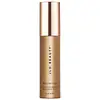What's inside
What's inside
 Key Ingredients
Key Ingredients

 Benefits
Benefits

No benefits
 Concerns
Concerns

 Ingredients Side-by-side
Ingredients Side-by-side

Synthetic Fluorphlogopite
Talc
AbrasiveCalcium Sodium Borosilicate
Dimethicone
EmollientTriethylhexanoin
MaskingCalcium Aluminum Borosilicate
Phenoxyethanol
PreservativeSorbitan Stearate
EmulsifyingSilica
AbrasiveCaprylyl Glycol
EmollientPolyacrylamide
C13-14 Isoparaffin
EmollientPolysorbate 20
EmulsifyingDichlorobenzyl Alcohol
AntimicrobialEthylhexylglycerin
Skin ConditioningLaureth-7
EmulsifyingTin Oxide
AbrasiveMica
Cosmetic ColorantCI 77891
Cosmetic ColorantCI 77491
Cosmetic ColorantCI 77492
Cosmetic ColorantCI 77499
Cosmetic ColorantCI 75470
Cosmetic ColorantSynthetic Fluorphlogopite, Talc, Calcium Sodium Borosilicate, Dimethicone, Triethylhexanoin, Calcium Aluminum Borosilicate, Phenoxyethanol, Sorbitan Stearate, Silica, Caprylyl Glycol, Polyacrylamide, C13-14 Isoparaffin, Polysorbate 20, Dichlorobenzyl Alcohol, Ethylhexylglycerin, Laureth-7, Tin Oxide, Mica, CI 77891, CI 77491, CI 77492, CI 77499, CI 75470
Water
Skin ConditioningDimethicone
EmollientMica
Cosmetic ColorantPropanediol
SolventCI 77491
Cosmetic ColorantLaureth-7
EmulsifyingPolyacrylamide
Tocopheryl Acetate
AntioxidantOlea Europaea Fruit Oil
MaskingPseudozyma Epicola/Olive Fruit Oil Ferment Filtrate
HumectantHydrogenated Ethylhexyl Olivate
EmollientOlea Europaea Leaf Extract
PerfumingHydrogenated Olive Oil Unsaponifiables
EmollientC13-14 Isoparaffin
EmollientEthylhexylglycerin
Skin ConditioningSqualane
EmollientPhenoxyethanol
PreservativePotassium Sorbate
PreservativeSodium Benzoate
MaskingCI 77891
Cosmetic ColorantWater, Dimethicone, Mica, Propanediol, CI 77491, Laureth-7, Polyacrylamide, Tocopheryl Acetate, Olea Europaea Fruit Oil, Pseudozyma Epicola/Olive Fruit Oil Ferment Filtrate, Hydrogenated Ethylhexyl Olivate, Olea Europaea Leaf Extract, Hydrogenated Olive Oil Unsaponifiables, C13-14 Isoparaffin, Ethylhexylglycerin, Squalane, Phenoxyethanol, Potassium Sorbate, Sodium Benzoate, CI 77891
Ingredients Explained
These ingredients are found in both products.
Ingredients higher up in an ingredient list are typically present in a larger amount.
This ingredient is also known as "C13-14 Isoalkane".
C13-14 Isoparaffin is created from petroleum-based mineral oils. It is an emollient and helps thicken a product.
As an emollient, it helps keep the skin soft and smooth by creating a barrier on top. This barrier traps moisture in, keeping the skin hydrated.
C13-14 Isoparaffin may not be fungal-acne safe.
Learn more about C13-14 IsoparaffinCi 77491 is also hydrated iron III oxide. It's sole purpose is to give a red/pink hue to products.
Iron III oxides are classified as inorganic chemicals for coloring.
Synthetically created Ci 77491 is considered safer than those naturally found. This is because the synthetically created version may contain less impurities. Iron oxides are generally non-toxic and non-allergenic.
Learn more about CI 77491Ci 77891 is a white pigment from Titanium dioxide. It is naturally found in minerals such as rutile and ilmenite.
It's main function is to add a white color to cosmetics. It can also be mixed with other colors to create different shades.
Ci 77891 is commonly found in sunscreens due to its ability to block UV rays.
Learn more about CI 77891Dimethicone is a type of synthetic silicone created from natural materials such as quartz.
What it does:
Dimethicone comes in different viscosities:
Depending on the viscosity, dimethicone has different properties.
Ingredients lists don't always show which type is used, so we recommend reaching out to the brand if you have questions about the viscosity.
This ingredient is unlikely to cause irritation because it does not get absorbed into skin. However, people with silicone allergies should be careful about using this ingredient.
Note: Dimethicone may contribute to pilling. This is because it is not oil or water soluble, so pilling may occur when layered with products. When mixed with heavy oils in a formula, the outcome is also quite greasy.
Learn more about DimethiconeEthylhexylglycerin (we can't pronounce this either) is commonly used as a preservative and skin softener. It is derived from glyceryl.
You might see Ethylhexylglycerin often paired with other preservatives such as phenoxyethanol. Ethylhexylglycerin has been found to increase the effectiveness of these other preservatives.
Laureth-7 is created by the ethoxylation of lauryl alcohol using ethylene oxide. Lauryl alcohol is a fatty alcohol with hydrating properties.
This ingredient is an emulsifier and cleansing ingredient. As an emulsifier, it is used to prevent ingredients from separating. It also helps cleanse the skin by gathering dirt, oil, and pollutants to be rinsed away.
Mica is a naturally occurring mineral used to add shimmer and color in cosmetics. It can also help improve the texture of a product or give it an opaque, white/silver color.
Serecite is the name for very fine but ragged grains of mica.
This ingredient is often coated with metal oxides like titanium dioxide. Trace amounts of heavy metals may be found in mica, but these metals are not harmful in our personal products.
Mica has been used since prehistoric times throughout the world. Ancient Egyptian, Indian, Greek, Roman, Aztec, and Chinese civilizations have used mica.
Learn more about MicaPhenoxyethanol is a preservative that has germicide, antimicrobial, and aromatic properties. Studies show that phenoxyethanol can prevent microbial growth. By itself, it has a scent that is similar to that of a rose.
It's often used in formulations along with Caprylyl Glycol to preserve the shelf life of products.
Polyacrylamide is a synthetic polymer. It is used to stabilize products and bind ingredients. When hydrated, Polyacrylamide forms a soft gel.
Polyacrylamide is low-toxicity. If source properly, it is deemed safe to use in cosmetics.
It should be noted the precursor to Polyacrylamide is acrylamide. Acrylamide is a carcinogen. Most reputable sources of Polyacrylamide will screen for residual acrylamide to make sure the count is in a safe range. Acrylamide is not able to be absorbed through the skin.
We recommend speaking with a professional if you have concerns.
Learn more about Polyacrylamide